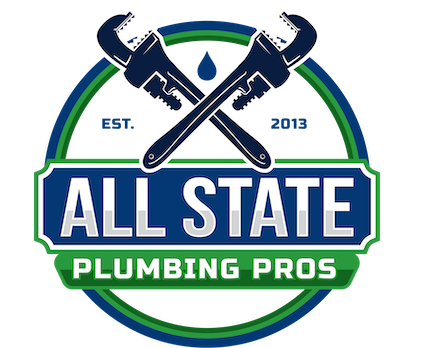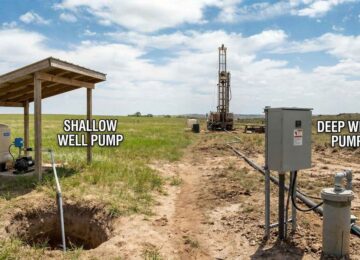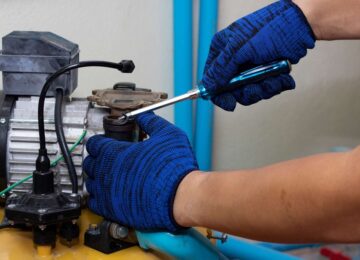Learning how to winterize home plumbing is one of the most effective ways homeowners can protect their property during cold temperatures, especially in harsh winters. Cold weather can cause water in pipes to freeze and expand, which often leads to burst pipes, major water damage, and expensive emergency repairs. Taking the right precautions before temperatures drop can help you avoid these issues and maintain peace of mind throughout the winter.
This comprehensive guide explains how to winterize home plumbing step by step, offering professional tips, preventative measures, and proven techniques to prevent frozen pipes. Whether you’re preparing for a brief cold snap or an entire winter season, these strategies will help keep your plumbing system and fixtures safe.
Preparing the Home for Winterization
To prepare your home for winterization, start by cutting off the water supply using the shutoff valves and draining as much water from your system as possible. This reduces the risk of frozen pipes and keeps residual water from sitting in fixtures or lines where it could expand and cause damage.
- Shut off the main water valve – This is typically located near the water meter or where the main line enters your home. Closing it stops water from entering your plumbing system.
- Drain all the water lines – Open all faucets, shower valves, and outdoor faucets at the lowest point in the house to allow water to drain completely. Flush all toilets until the tanks and bowls are empty.
- Add antifreeze to traps and drains – RV antifreeze (not automotive antifreeze) prevents residual water in P-traps, toilets, and floor drains from freezing.
- Insulate pipes in unheated spaces – Crawl spaces, basements, and attics are particularly vulnerable. Use foam pipe insulation or heat tape on any exposed lines.
- Install a curb stop valve – If your home doesn’t already have one, this shut-off valve allows you to stop water flow at the street, offering an extra level of control during emergencies.
By taking the time to fully drain and insulate your system, you’ll greatly reduce the risk of frozen or burst pipes when the temperature drops below freezing.
Protecting Plumbing Fixtures from Damage
Protecting your plumbing fixtures is another critical part of the winterization process. Fixtures like hose bibs, outdoor faucets, and pipes in outside walls are among the first to freeze when exposed to extreme cold.
- Use electric heat tape on problem pipes – Pipes that freeze regularly benefit from heat tape, which applies a consistent, low-level warmth. Follow the manufacturer’s instructions carefully for safe installation.
- Leave faucets dripping – A slow trickle of running water helps prevent pressure buildup in the line, lowering the chance of freezing.
- Insulate exterior hose bibs – Use foam or insulated faucet covers to protect outdoor spigots from cold air. Disconnect and store garden hoses.
- Keep garage doors closed – Garages often house plumbing lines or water heaters, so closing the door keeps cold air out.
Draining pipes thoroughly and protecting them with insulation or heat sources will go a long way in preventing expensive burst pipe emergencies.
Winterization Steps to Prevent Damage
Following a full winterization plan ensures that your home’s entire plumbing system remains protected. This process is especially important if you’ll be away from home for extended periods or live in an area where temperatures drop below the frost line for weeks at a time.
- Apply pipe insulation to all pipes located in exterior walls or unheated areas, such as crawl spaces and attics.
- Blow out remaining water using compressed air to clear any residual water from pipes and sprinkler systems. This step is critical to prevent freezing in hidden areas.
- Drain water from toilets and water heaters – Open the drain valve at the base of the water heater tank and flush remaining water from toilet bowls and tanks.
- Pour RV antifreeze into drains and traps – This step protects drain traps from evaporating and freezing.
- Keep the house heated to at least 55°F if possible, even when unoccupied. Warmer air circulating through cabinets and exterior walls helps protect pipes.
Taking these steps systematically and verifying that all the pipes are completely dry can prevent thousands of dollars in potential water damage.
Winterizing Well Pumps and Sprinkler Systems
Many homes in Connecticut and New York rely on well pumps or have outdoor sprinkler systems that are especially vulnerable to freezing temperatures. To protect these components, start by shutting off the power supply to the well pump and draining any residual water from the system. Outdoor sprinkler systems should be blown out using compressed air to clear water from the lines and heads, which helps to prevent pipes from being damaged when temperatures fall below freezing. If you’re unsure how to complete this process, hire a licensed plumber who can winterize these systems correctly.
Additionally, insulating well pump covers and sealing off exposed pipes around the pump housing will add another layer of protection. Sprinkler timers should also be set to the “off” position until spring. These extra steps ensure that less-visible parts of your plumbing system remain safe all winter.
Commercial Property Plumbing Winterization Tips
Business owners and commercial property managers face unique challenges when winterizing plumbing systems. Larger buildings often have more extensive pipe networks, multiple water heaters, and plumbing fixtures spread across unheated areas. Start by creating a detailed winterization checklist that includes shutting off unused water lines, insulating pipes in exterior walls, and inspecting commercial-grade water heaters for leaks or cracks.
It’s also important to educate staff on how to locate and use the main shut-off valve in the event of a burst pipe. Consider installing freeze alarms or smart monitoring devices that alert you when indoor temperatures drop too low. Scheduling routine inspections with a commercial plumbing service ensures that all the pipes, including the hot water tank and fixtures in your building, remain protected, reducing the risk of expensive downtime or water damage.
Monitoring Indoor Temperatures and Airflow
Maintaining consistent indoor temperatures is a critical part of winterizing your home’s plumbing. Cold spots in basements, crawl spaces, or attics can increase the risk of pipes freezing. Keep your thermostat set to a minimum of 55°F, even when the house is unoccupied. Avoid turning the heat off completely, as this can cause extreme temperature drops inside the home.
Also, pay attention to airflow. Open cabinet doors under kitchen and bathroom sinks so warmer air can circulate around pipes in exterior walls. Seal any drafts around windows, doors, and foundation vents to minimize exposure to cold air. Monitoring these areas can help you spot potential problem zones before they cause costly damage.
Tips to improve temperature and airflow:
- Keep the thermostat at a consistent temperature, day and night.
- Open cabinet doors under sinks in exterior walls to allow warmer air to reach pipes.
- Use weatherstripping or caulk to seal drafts around windows and doors.
- Close foundation vents or other openings in crawl spaces during cold spells.
Inspecting and Maintaining Plumbing Components
Regular inspections go hand in hand with winterization. Start by checking for leaks, cracks, or loose fittings in visible pipes and plumbing fixtures. Even small leaks can worsen in cold weather, leading to frozen pipes and water damage. Examine water heaters, hot water tanks, and shutoff valves for signs of wear and tear.
If you have a sump pump, test it before the first freeze to ensure it’s working properly. Cleaning gutters and downspouts is another important task, as clogged drainage systems can cause ice dams that put additional strain on your plumbing. Keeping these components in good condition will make your entire plumbing system more resilient during extreme temperatures.
What to inspect before winter sets in:
- Check exposed pipes and joints for leaks or signs of corrosion.
- Inspect water heaters and shutoff valves for proper operation.
- Test sump pumps by pouring water into the pit and ensuring they activate.
- Clear gutters and downspouts of leaves and debris to improve drainage.
Insulating Outdoor and Garage Plumbing Areas
Outdoor plumbing areas and garages are some of the most vulnerable spaces in a home during cold weather. These areas often lack proper insulation, allowing freezing air to seep in and damage pipes. Adding insulation or sealing gaps is a straightforward way to prevent major issues.
Ways to protect these areas:
- Install foam or fiberglass insulation around exposed pipes in the garage or exterior walls.
- Use door sweeps and weatherstripping to reduce cold drafts in garages.
- Cover exterior hose bibs with insulated faucet covers and disconnect all garden hoses.
- Seal gaps in siding, foundation, or around utility lines where cold air could reach plumbing.
By reinforcing these spaces, you’ll prevent extreme temperatures from affecting your plumbing system.
Preparing for Extended Absences
If you plan to leave your home for several days or weeks during the winter, additional precautions are necessary. An empty house can be at a higher risk for frozen pipes since no one is around to spot and address early warning signs.
Steps to take before leaving for an extended trip:
- Shut off the main water valve and drain all water lines to prevent pipes from freezing.
- Set the thermostat to at least 55°F so the home remains warm enough to protect plumbing.
- Ask a trusted neighbor or professional service to check on your property periodically.
- Install a smart water monitoring device that can alert you to leaks or temperature drops.
Taking these steps can save you from returning to a plumbing emergency after a trip.
Final Steps and Emergency Precautions
Once winterizing is complete, it’s essential to double-check that all areas of your plumbing system are secure and prepared for extreme temperatures.
- Inspect all pipes – Look for any lingering water left in low spots or sagging pipes that could trap water.
- Know where your main water valve is – In the event of a burst pipe, shutting off the water quickly can prevent extensive damage.
- Install freeze-proof spigots – Upgrading to frost-proof faucets is a worthwhile investment for long-term protection.
- Keep plumber contact information handy – Emergencies happen. Having a trusted professional’s number ready can make the difference between a small repair and a major disaster.
- Document the winterization process – Keeping a record of the steps taken will help ensure nothing is missed in future seasons.
By following these final steps, you’ll be fully prepared for the cold months ahead and equipped to handle any unexpected plumbing emergencies.
Conclusion
Winterizing your home’s plumbing isn’t just a recommendation; it’s a necessity if you live in areas with cold winters. By shutting off water supply lines, draining fixtures, insulating exposed pipes, and using antifreeze where needed, you can significantly reduce the risk of frozen pipes and costly repairs. When in doubt, consult a licensed plumber who can help tailor a winterization plan to your home’s specific needs.
That said, if you’re unsure how to fully winterize your plumbing system or want the job done right the first time, it’s best to call in a professional. At All State Plumbing Pros, we’re available 24/7 to help homeowners and businesses across Connecticut and New York protect their pipes before freezing temperatures hit.
Whether you need complete winterization or emergency repairs, contact us today for fast, reliable service from licensed plumbing experts.
FAQs
How do you winterize your water pipes?
To winterize your water pipes, shut off the main water valve, drain all plumbing fixtures, including the kitchen sink, and add insulation to pipes in unheated spaces. You may also use an air compressor to blow out any remaining water. Pour RV antifreeze into drains and traps for extra freeze protection.
How to drain water pipes to keep from freezing in a home?
Begin by shutting off the main water supply. Open all faucets and shower valves starting from the top floor and work your way down. Flush all toilets, then use an air compressor at the lowest point of the system to push out residual water from the pipes.
How to protect house pipes from freezing?
Keep your home heated to at least 55°F, insulate pipes in exterior walls and crawl spaces, and allow faucets to drip slowly during extreme temperatures. Opening cabinet doors under sinks also helps warmer air circulate around vulnerable plumbing pipes.
Do I need to drain my pipes for winter?
If you live in a region with freezing temperatures, draining your pipes is highly recommended. Removing water from the plumbing system helps prevent water from freezing and reduces the risk of frozen pipes and burst pipe emergencies, especially if the house will be vacant for long periods.

![How to Winterize Home Plumbing: Complete Expert Guide Learning how to winterize home plumbing is one of the most effective ways homeowners can protect their property during cold temperatures, especially in harsh winters. Cold weather can cause water in pipes to freeze and expand, which often leads to burst pipes, major water damage, and expensive emergency repairs. Taking the right precautions before temperatures […]](https://allstateplumbingct.com/wp-content/uploads/2025/09/How-to-Winterize-Home-Plumbing-Complete-Expert-Guide-750x420.jpg)



Leave a Reply